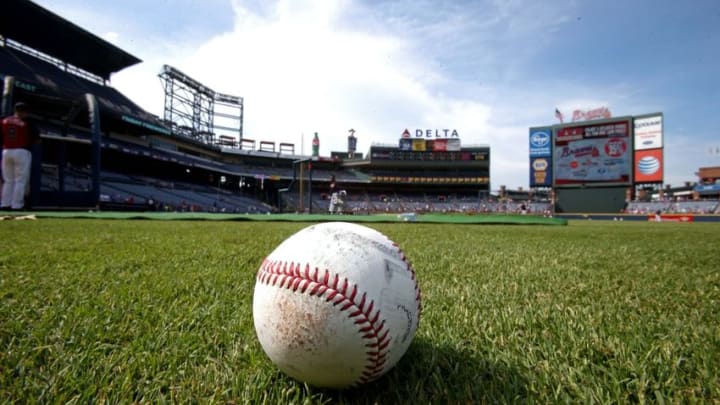Atlanta Braves Top 100 Prospects: 11. Austin Riley

Scouting Report
More from Tomahawk Take
- Braves News: Braves 2023 rotation speculation, Correa deal on hold, more
- Atlanta Braves: Current Left Field Mix
- Atlanta Braves 2023 Preseason Top 30 Prospects List: 11-15
- Braves News: Braves sign Luplow, Atlanta’s shortstop plans, more
- Atlanta Braves Could Go With Six-Man Rotation in 2023
Riley is listed as 6’3 and 220 pounds. I’d say that he’s actually lost as much as 20 pounds from that number, but that’s more based on seeing him at draft time and him being listed at 220-230 at that time and seeing him now. He has a wide shoulder/wide hip frame that could hold 200-220 pounds in a healthy way, but he’ll have to be diligent about it, and all evidence this offseason is that he spent a lot of time working on his fitness, to his credit.
Hitting
Riley stands tall at the plate, and he swings hard and through the zone in a hurry, but though his swing is fast, it’s also long, as dual as that sounds. That allows him to make solid contact and get good batting average on a number of balls that he is truly fooled on, but pitchers have found a hole already early in 2016 in that swing, and that’s using hard stuff inside on Riley, specifically inside from about thigh to the belt. He struggles to hit any of that, and it’s a location that is a definite strike in the way he sits over the plate.
When Riley swings, the contact he makes is incredible, and it explodes off his bat with a sound you just don’t hear from many players other than the absolute elite power hitters. The problem is that sometimes you hear a guy who can do that when he makes contact, but he can’t make enough contact. Riley has really turned a corner even this season, however, moving his spot at the plate from the spot where he stood to start the season, and this has allowed him to cover the plate better, forcing pitchers to pitch off the plate to attack him to the weak spot of his swing.
The first 15 games of the season, he struck out at a 38% rate, but since that adjustment, he’s dropped that rate by 15% to 23%, which still isn’t excellent, but a much more acceptable rate for a power hitter of Riley’s ability. He’s also walking at just short of a 9% rate, almost double the 4.6% rate of his walk rate in those first 15 games before he adjusted his position in the box.
Base Running/Fielding
Riley is a surprisingly adept base runner. I think he surprised the heck out of people when he stole his first base of the season on May 2nd, but he’s a smart base runner with good instincts. He’s hitting in the middle of the Rome lineup with some pretty on-base-heavy guys in front of him in Ronald Acuna and Ray-Patrick Didder, so often the bases are clogged in front of him when he gets on and there’s not a lot of running opportunities that I saw in my viewing of him. He did very well – twice – taking an extra base on a hit with smart base running, though, and that impressed me.
The thing that really impresses you more than anything about Riley in 2016 is his glove work compared to 2015. There were concerns that he would have to move off of third due to his defense last year, but now he’s moving extremely well with good first steps on balls and an obviously strong arm. The thing that just caught my eye more than anything was the natural baseball intelligence of Riley on multiple plays, one where he grabbed a bunt, and rather than throw down to first where the runner had already reached easily, he turned to second, where the runner had run past the base, and fired a shot to nail the lead runner.
In the first game of the double header on May 5th, Riley made a play that likely saved the game, snaring a grounder with runners on second and third and nobody out. Rather than firing across for the definite out at first, keeping the runners at second and third, he immediately went to the third base runner and found him off the bag, quickly tagging him, getting an out on the lead runner. A single a couple of plays later would have easily scored runners on second and third, but only scored the runner on second. The Braves were able to score in the bottom of the inning to win the game.
Video
Next: Future outlook